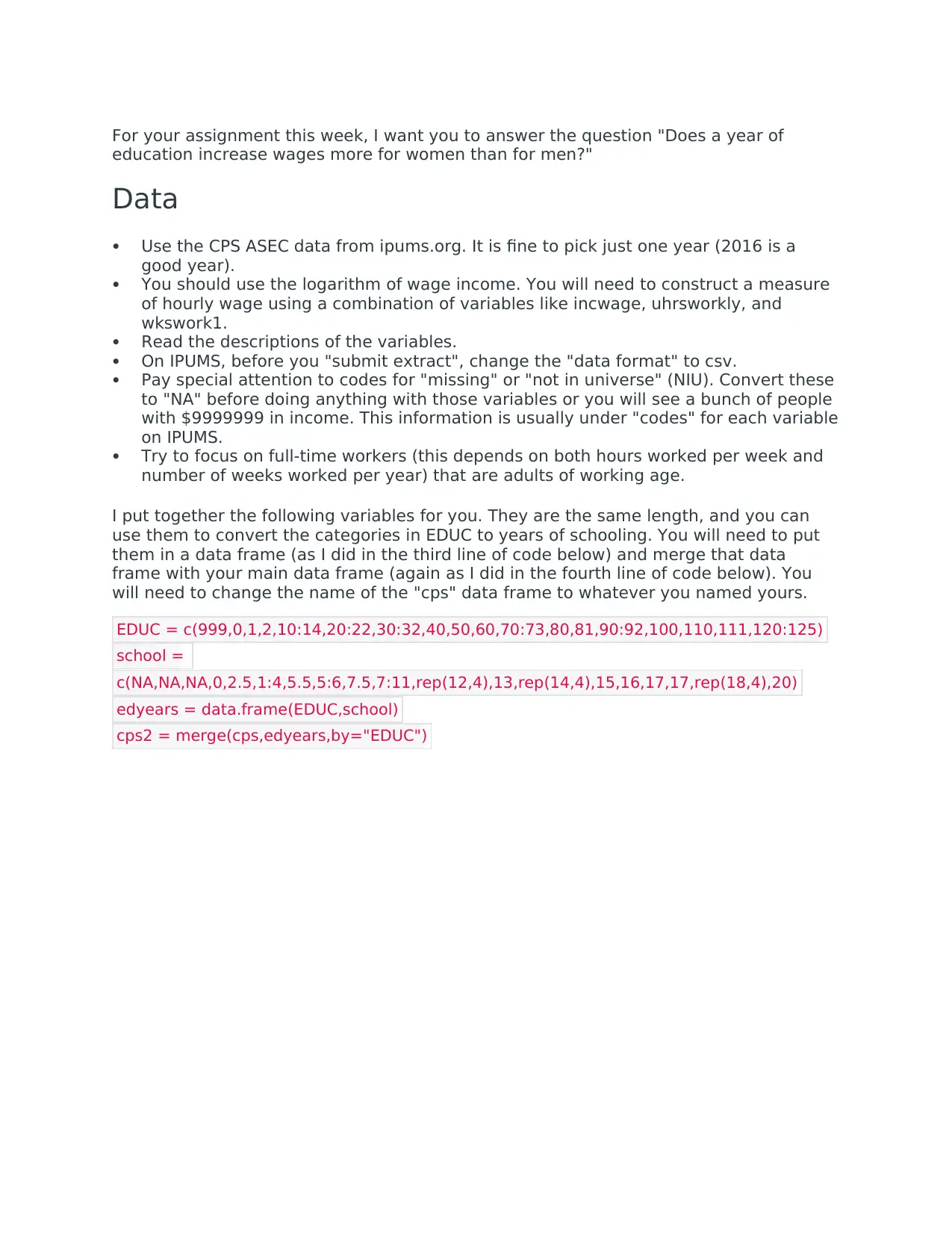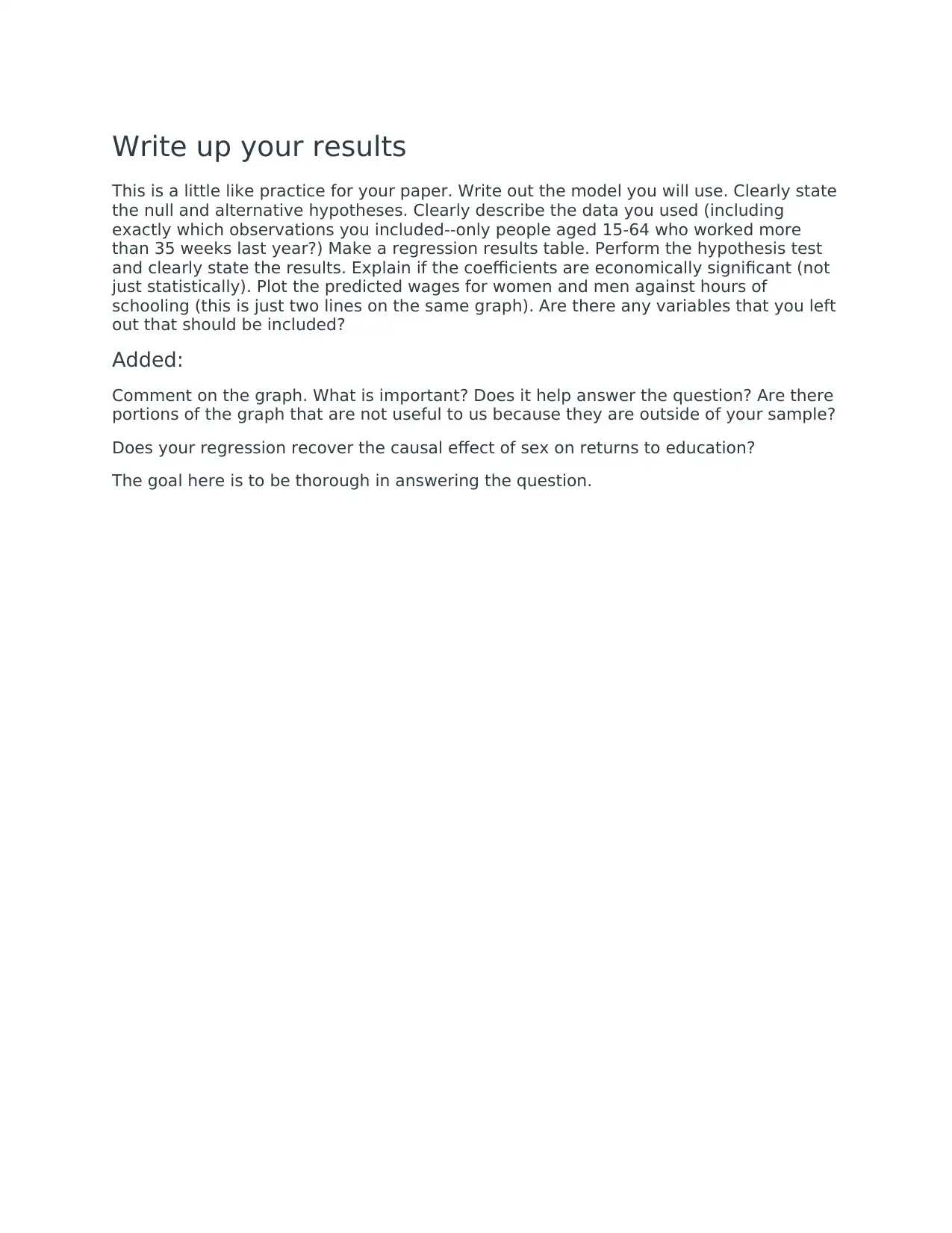Wage Analysis Assignment: Education, Wages, and Gender Differences
VerifiedAdded on 2019/09/16
|2
|541
|420
Homework Assignment
AI Summary
This assignment requires students to analyze the relationship between education and wages, specifically focusing on potential gender differences. The task involves using the CPS ASEC data from IPUMS to construct a measure of hourly wage, considering variables like incwage, uhrsworkly, and wkswork1, and accounting for missing data. Students are instructed to create a data frame for years of schooling from the EDUC variable and merge it with their main data frame. The assignment requires students to write out the model, state null and alternative hypotheses, describe the data used, create a regression results table, perform a hypothesis test, and interpret the results. Students must also plot predicted wages for men and women against years of schooling and discuss the economic significance of the findings and the limitations of the analysis. The goal is to provide a thorough answer to the question of whether a year of education increases wages more for women than for men. The assignment encourages students to reflect on the causal effect of sex on returns to education and the variables that might have been left out.
1 out of 2



![[object Object]](/_next/static/media/star-bottom.7253800d.svg)